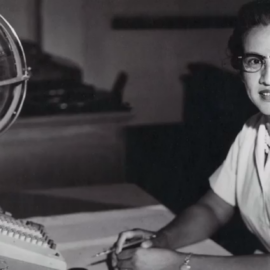

This article is an excerpt from the Shortform book guide to "The Emperor of All Maladies" by Siddhartha Mukherjee. Shortform has the world's best summaries and analyses of books you should be reading.
Like this article? Sign up for a free trial here .
When was the link between tobacco and lung cancer established? Why did it take so long for the public to be convinced?
In 1964, a scientific report conclusively showed that smoking cigarettes increases the risk of lung cancer. However, it took about a decade for the public to become convinced—congress fought hard to protect the tobacco industry.
Here’s a quick look at the fight against tobacco advertising.
The Fight Against Tobacco Advertising
After the link between tobacco and lung cancer has finally been established, the Federal Trade Commission (FTC) proposed that an explicit warning be put on every package of cigarettes to dissuade people from smoking. However, Congress severely weakened the FTC’s suggested warning in order to protect the tobacco industry. The final warning, which went into effect in 1965, read, “Caution: Cigarette smoking may be hazardous to your health.” That vague, watered-down message didn’t have nearly the impact on smoking rates that the FTC had hoped for.
A few years later, in 1968, a landmark court case ruled that anti-tobacco ads had to be given proportional airtime with pro-tobacco ads on TV. As a result, Mukherjee says, public opinion began to swing against the tobacco industry, and tobacco use in America steadily declined starting in 1974.
However, Mukherjee adds that—for that generation—the damage from a lifetime of smoking and tobacco addiction was already done. It would take decades to see a corresponding drop in rates of lung cancer, because that drop would mostly occur in the next generation.
(Shortform note: Although there are no longer tobacco ads on TV, tobacco companies in the US still spend billions of dollars per year advertising cigarettes, e-cigs, and other products, and they heavily target young people with their ads. E-cigarette companies also came under fire for targeting kids and teens with flavors like lemonade and candy, leading the US Food and Drug Administration to ban flavors besides tobacco and menthol in 2020. Most smokers today smoke their first cigarette before the age of 18, and the Centers for Disease Control and Prevention (CDC) attributes that—at least in part—to such marketing.)
The Good News
Cancer is a difficult topic with a bleak history, but Mukherjee does have some good news for us: From 1990-2005, cancer mortality declined by about 1% per year—an unprecedented 15% decrease overall. Mukherjee says that this decrease was the result of earlier advancements in cancer prevention, screening, and treatment, such as the pushback against the tobacco industry in the 1960s and 1970s.

———End of Preview———
Like what you just read? Read the rest of the world's best book summary and analysis of Siddhartha Mukherjee's "The Emperor of All Maladies" at Shortform .
Here's what you'll find in our full The Emperor of All Maladies summary :
- An overview and rough timeline of the fight against cancer
- A look into the more technical aspects of cancer and cancer treatment
- The social aspects of the fight against cancer






